Boston’s racial homeownership gap has widened. What will it take to fix it?
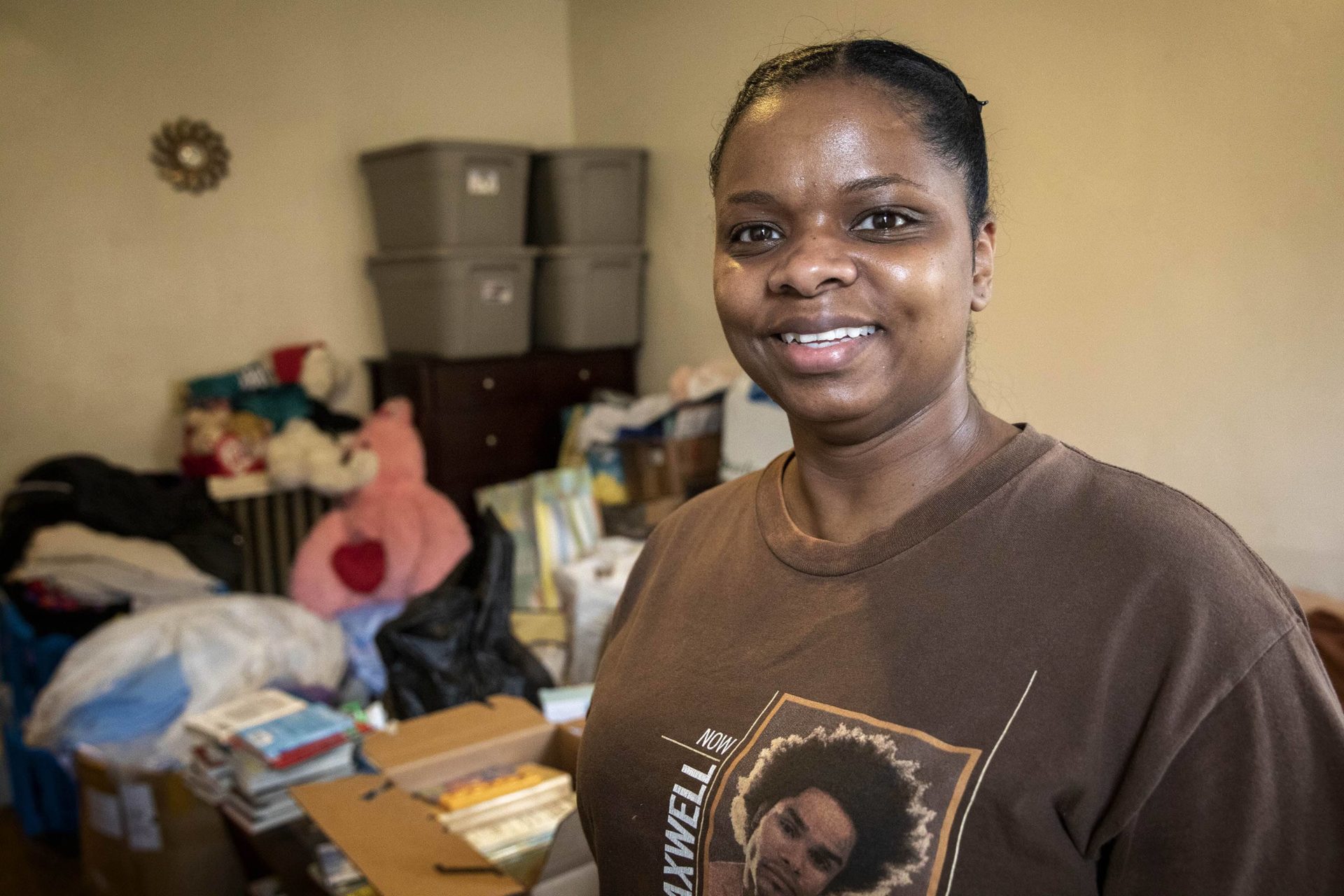
Cecilia Dixon at the home she rented in Mattapan for around six years before moving to her new home in Dorchester. (Robin Lubbock/WBUR)
House hunting in Boston can often feel like one of those reality TV dating shows. There’s the first meeting, where you and a dozen or so other contestants circle the object of your desire. You fall in love, maybe make a proposal, and then more likely than not … you get rejected.
This is the sort of emotional gauntlet Cecilia Dixon of Mattapan stepped into last March, when she found a cheery, blue two-family house for sale in Dorchester that checked all the right boxes: A floor she could rent out, enough space for her and her dad, and an upstairs suite perfect for her grandson and adult daughter. “So, she wouldn’t have to bother us,” Dixon said, laughing.
The 48-year-old put in an offer, held her breath … and lost out to another buyer. This cycle repeated five more times.
“It’s just so insane,” Dixon said. “I didn’t realize how bad it was — the demand for people wanting to be in Boston. I just was getting outbid like crazy.”
Listen to the audio version of this story at WBUR.org. This is the third of three stories on Boston’s Home Loan Gap.
On top of fierce competition, Black residents like Dixon often face additional challenges on the path to homeownership. A WBUR analysis finds from 2015-2020, lenders denied mortgages to Black people in Boston at three times the rate of white people. And most mortgage loans went to majority-white areas of the city.
Boston has long seen a racial gap among homeowners. For white residents, the homeownership rate is 44%, while it’s 30% for Black residents and 17% for Latino residents. This gap has actually widened since the federal government outlawed redlining in 1968, according to data from the city. And it feeds into a broader racial wealth gap.
So, some local organizations are working to make Boston’s real estate market more equitable.
‘Forget The Credit Score’
Like any market, the housing market has a supply side and a demand side. One organization working on the demand piece — people who want to buy homes — is the Neighborhood Assistance Corporation of America (NACA).
The Boston-based organization helps low- and moderate-income folks around the country navigate the homebuying process. The nonprofit offers homebuyer counseling and a special mortgage loan product.
“It’s no down payment. It’s no closing costs,” said NACA’s Executive Director Bruce Marks. “Bank pays all the closing costs. And it’s always at a below-market fixed rate.”
NACA worked with banks to craft its loan package, which is aimed at people traditional lenders don’t always reach. People like Dixon, who would be the first in their family to own a home. When deciding who should qualify for a loan, the organization factors in criteria other lenders might not, like whether a person consistently pays their rent or cellphone bill on time.
“We say, ‘forget the credit score,’ because it’s not an accurate reflection of whether someone’s ready for homeownership,” Marks said. “Throw that out and go back to character-based lending. That’s when you look at people’s overall circumstances.”
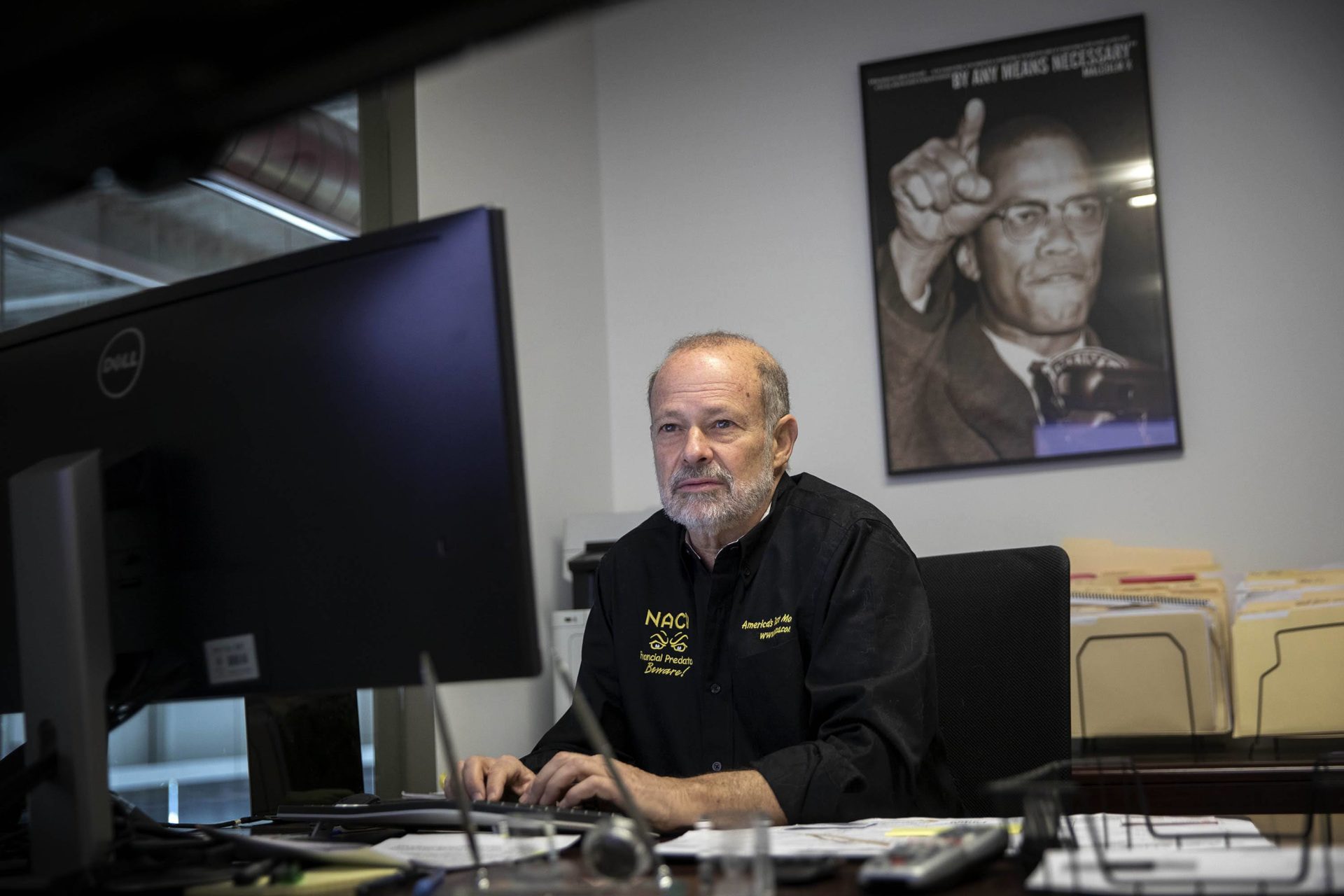
NACA CEO Bruce Marks, at the organization’s offices in Boston. (Robin Lubbock/WBUR)
Marks said this makes a big difference for folks with little wealth who’ve traditionally been locked out of the housing market. More than 90% of NACA’s clients are people of color. While the process can take many months — even years — NACA keeps supporting clients until they’re ready to buy a home.
And for most people, the mortgage works out. Out of about 300,000 mortgages NACA has handled across the U.S. over the past decade, Marks said the organization has seen just 41 foreclosures. In Boston, NACA has helped nearly 2,000 people secure mortgages since its founding in the late 1980s.
Six years ago, when Dixon began her home-buying odyssey, she tried to get a loan through her credit union, but she didn’t see how she could buy a home in Boston with the loan amounts it was offering. And she was determined to buy in the city.
“Boston is where my roots are — my community, my family, my friends,” Dixon said. “I’m a Beantown girl.”
With NACA’s counseling, she realized there were other homeownership costs she needed to save for, such as insurance and inspections. So, in addition to her full-time accounting job, she’s worked as a Target cashier on weekends for the past few years.
NACA and other homebuyer programs offered by the city and state are helping more people like Dixon purchase homes in Boston, but experts say it will take much more to bridge the homeownership gap. Part of the reason is the persistent wealth gap, which makes it harder for people of color to afford homes and realize the financial benefits that come with homeownership.
“You can’t grow wealth unless you have wealth,” said Tom Shapiro, a professor at Brandeis University who studies race and wealth inequality.
To help more people of color build wealth, Shapiro points to policies such as a guaranteed basic income or baby bonds, which would create trust funds for every child seeded with money from the government. Poor families would get larger sums than rich families. In adulthood, that money could be used for investments like a downpayment on a house.
Some researchers and housing experts point out that paying reparations to Black people would also help those historically shut out of homeownership.
“Housing policy in itself has been racist from the beginning,” said Sarah Philbrick, a research analyst formerly with the Metropolitan Area Planning Council (MAPC), highlighting policies like redlining and segregation. “Unless you have intentional policies to make reparations or desegregate the city, you’re not going to be able to really change that historic precedent.”
These ideas and homebuyer assistance programs address the demand side of the housing market — people who want to buy homes and need some help to do that. But, there’s another side to the homeownership gap: supply. A huge part of the problem is there just isn’t enough housing in Boston.
‘Whatever We Can Do To Create More Housing Is Good’
On Magnolia Street in Roxbury, there’s a fenced in plot with overgrown grass.
“This is going to be the site where we’re going to be creating four units of affordable housing,” said René Mardones, of the Dudley Street Neighborhood Initiative. The nonprofit is working to increase housing supply, one empty lot at a time.
Mardones explained that Roxbury residents decide what gets developed here. The plan right now is to sell the homes the organization builds for below market rate.
“You can see, if you walk around the neighborhood, new buildings, new condominiums are coming up,” Mardones said. “But the question is, how many of those units are affordable for people of color, immigrants, African Americans?”
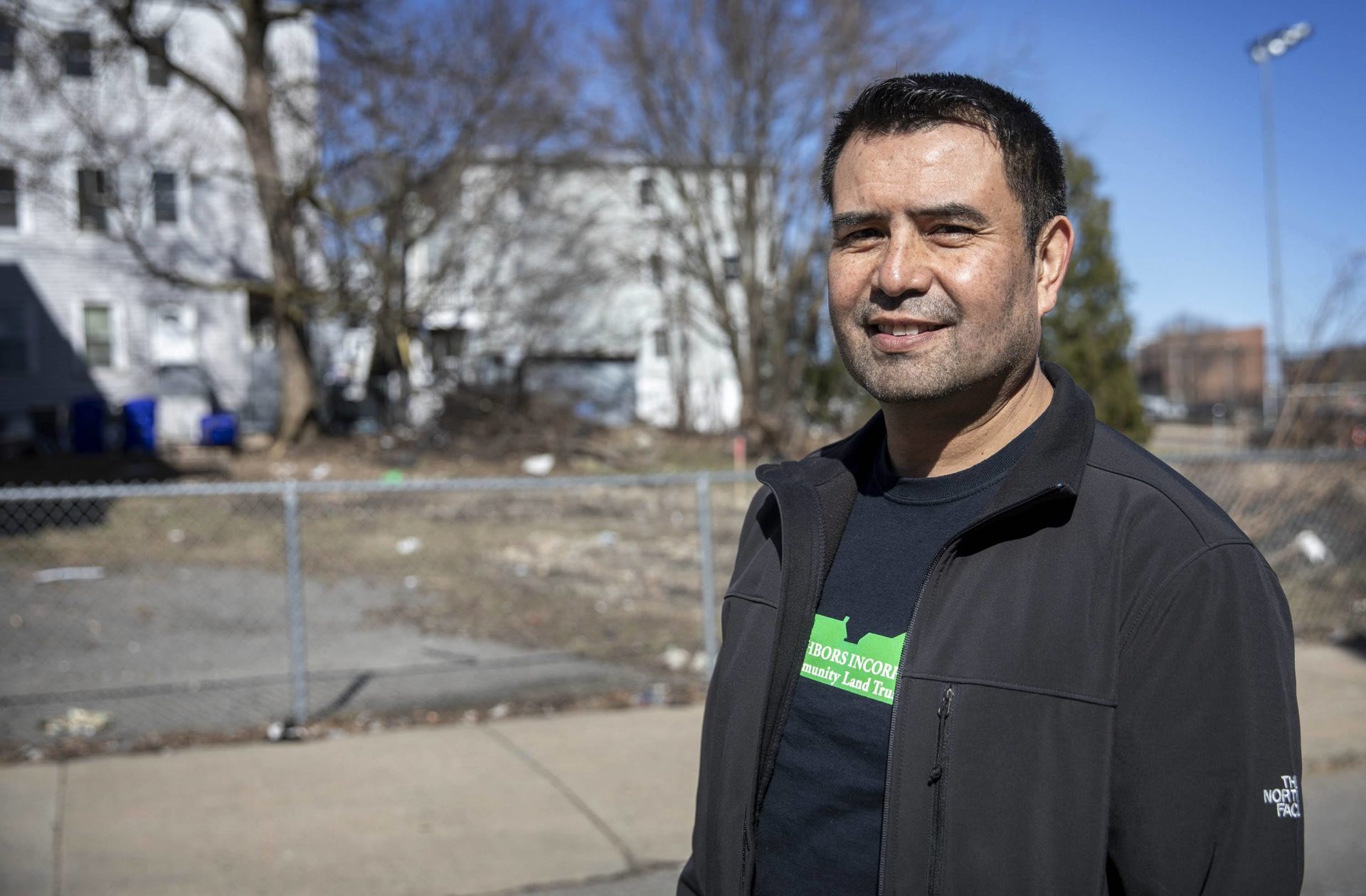
René Mardones, DSNI’s director of community organizing, at a site for four new housing units on Magnolia Street. (Robin Lubbock/WBUR)
WBUR’s analysis of mortgage loans in Boston found that even in neighborhoods where people of color are the majority, white residents still received a disproportionate share of home loans.
In Roxbury, for example, white people made up just 13% of the population, but received 34% of home loans. There were similar disparities in Hyde Park, East Boston and Dorchester.
Mardones is concerned about gentrification and the displacement of people of color from Roxbury. “We want to preserve the essence of this community,” he said.
Many families have already moved out. According to the 2020 census, Roxbury is no longer majority-Black after its Black population dropped by roughly 10 percentage points since 2010.
Dudley Street Neighborhood Initiative hopes building more housing that is affordable for people who already live in the community will give them the opportunity to stay, own a home and build equity.
“Whatever we can do to create more housing is good,” Mardones said.
Above the grassroots level, truly tackling the homeownership gap will require systemic policy changes, according to local housing experts.
Barry Bluestone, a professor emeritus at Northeastern University, proposes one such strategy: build more housing for the thousands of students who compete for dwellings each year.
“If you could move graduate students out of triple deckers and duplexes into their own housing that would be appropriate for them, that housing — which was built as homeownership housing originally and family housing with multiple bedrooms and multiple baths — would become available once again for working families,” Bluestone said.
Zoning rules are another important factor in the homeownership gap, some experts say. These rules often limit the type of housing that can be built in a community, which then restricts who can afford the homes that are available, according to Karina Oliver-Milchman, chief of housing and neighborhood development at MAPC.
“Through zoning today, we continue to see patterns of exclusion that say this type of person can live here, and this type of person can’t,” Oliver-Milchman said.
She said much of the region is zoned for single-family housing, which is expensive, but changing zoning rules to allow for more multi-family housing would help increase homeownership opportunities.
Boston has a goal to build thousands of units of housing that would be more affordable for residents over the next decade. And the state Legislature has approved spending $180 million of federal COVID relief money on efforts to help first-time home buyers and spur construction of homes that are affordable, with a focus on communities of color.
Such efforts will help, experts say, but will not solve the homeownership gap overnight. Some housing policy experts argue action from the federal government is needed to hold financial institutions accountable for disparities in mortgage lending. They propose steps such as strengthening the Community Reinvestment Act to get financial institutions to lend more broadly, particularly in communities of color.
Meanwhile, homebuyers like Dixon are doing their best to navigate Boston’s housing market.
‘It’s Not Just About Me. It’s About My Family’
After losing out on several bids last year, Dixon worried she might have to give up her dream of owning a home in the city.
“It really disheartened me,” Dixon said. “I really prayed really hard, and said, ‘You know, God, I just, you know my desire is I want to buy a home, I want to buy a home in Boston.’ ”
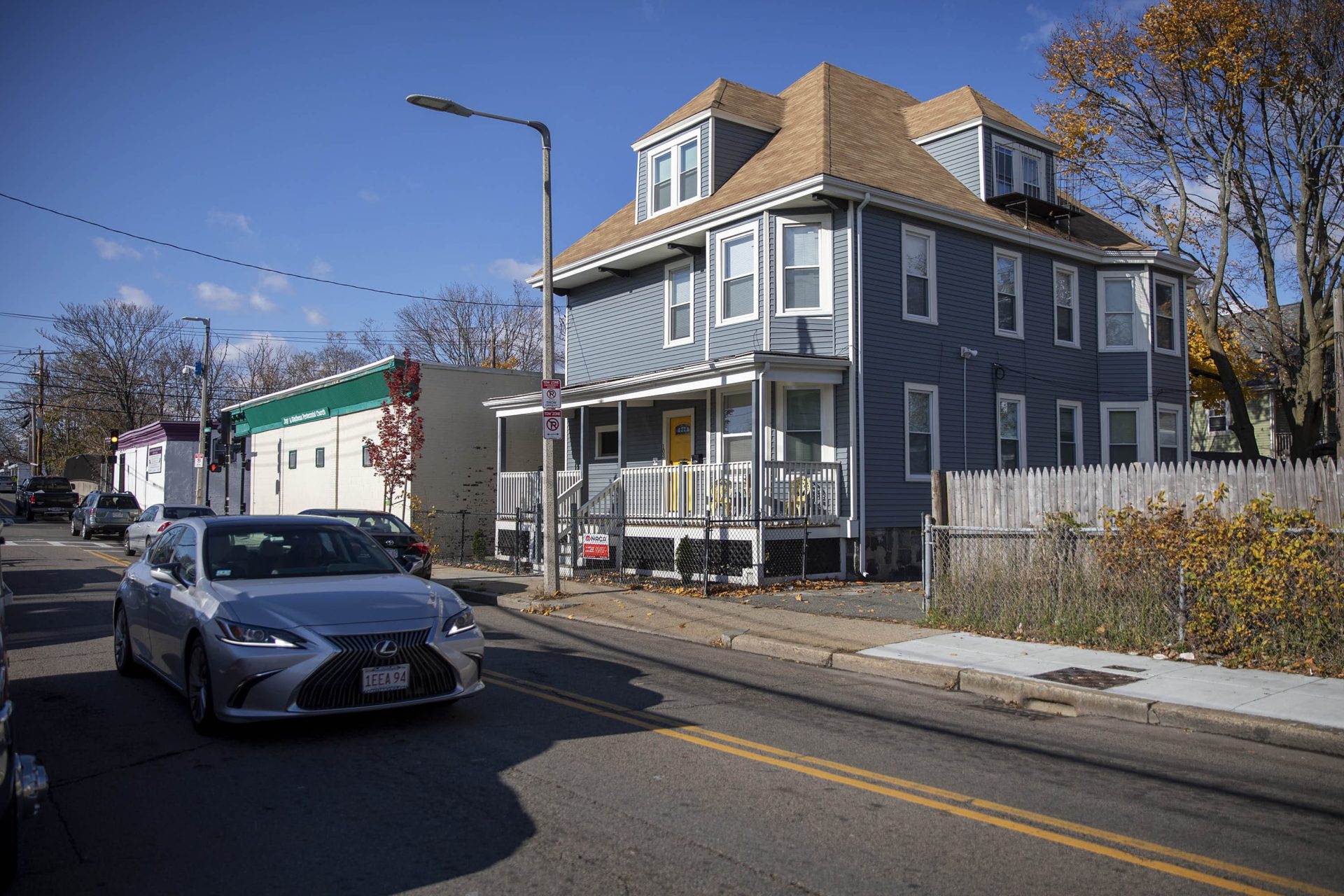
Cecilia Dixon’s new home on Harvard Street, Dorchester. (Robin Lubbock/WBUR)
Her prayers were answered.
Her agent told her the financing had fallen through for the buyer of that two-family home in Dorchester she had fallen in love with. The sellers wanted to know if she was still interested.
“I was like, ‘Yeah, of course!’ ” Dixon said.
And so, on a Saturday afternoon, Dixon stood outside her house, beaming.

Cecilia Dixon stands on Harvard Street, Dorchester, by her new home. (Robin Lubbock/WBUR)
“I’m just so excited,” Dixon said. “And I’m seeing … birthday parties, little cookouts here. I’m just excited to see how everything is going to come together.
So, Dixon, who has spent her life bouncing between rentals, beat the odds and got a home.
“It’s not just about me,” said Dixon. “It’s about my family and about having something stable. Something that can last for generations to come.”
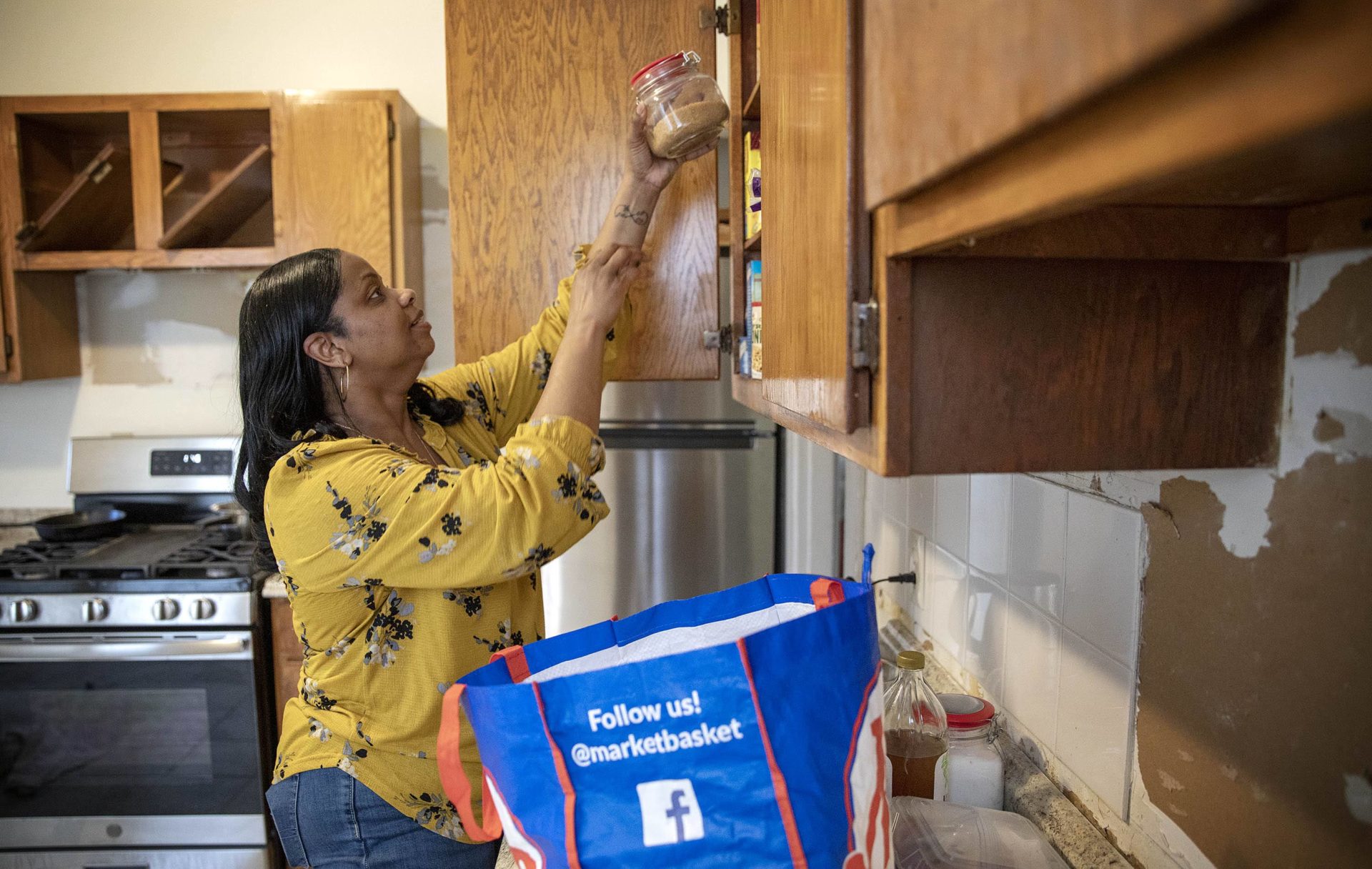
With redecorating under way at her new home in Dorchester, Cecilia Dixon unloads groceries in her kitchen. (Robin Lubbock/WBUR)
From baby bonds and tougher banking regulations to city zoning policies and individual homebuyer assistance, the range of ideas out there to help close the racial homeownership gap underscores just how vast and complex the problem is. And yet, many housing advocates and experts remain optimistic that homeownership and lending disparities can be fixed.
“Of course they can be fixed. You know why? Because they are man-made problems,” said Chrystal Kornegay, who heads up MassHousing, which supports affordable housing development around the state.
“These are problems that we created as a society. And so we can solve them as a society.”
WBUR’s Saurabh Datar contributed reporting.
Read part 1 and part 2 of WBUR’s series on Boston’s Home Loan Gap.
